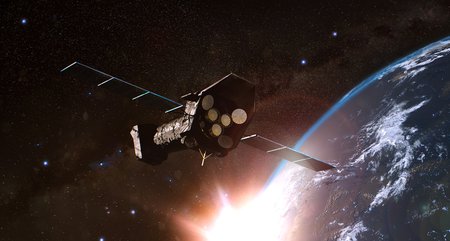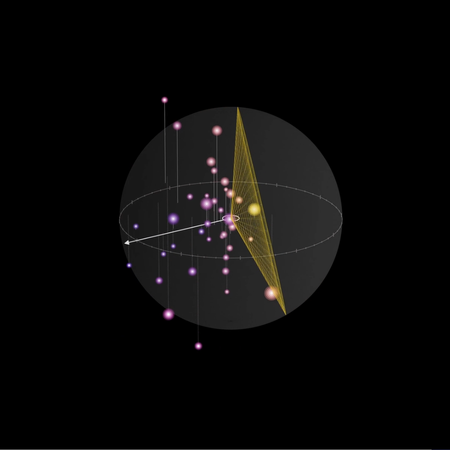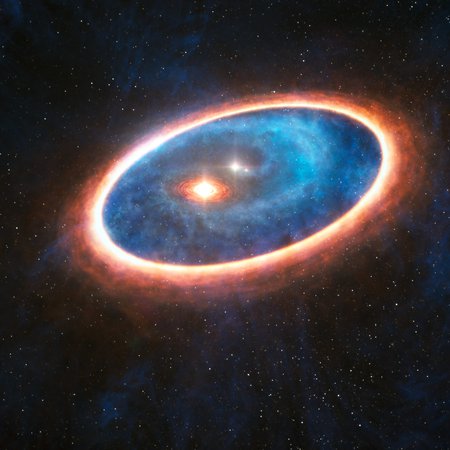XMM-Newton anniversary: 25 years X-rays from space
On 10 December 1999, the European Space Agency's X-ray satellite XMM-Newton began its journey to investigate X-ray sources in the universe. The Leibniz Institute for Astrophysics Potsdam (AIP) has been involved for three decades with software development and data analysis. To mark the anniversary, the AIP is publishing a video with contributions from AIP researchers on science using the satellite's X-ray data.
25 years ago, on 10 December 1999, the European X-ray observatory XMM-Newton was launched into a wide orbit around Earth. From this location, it captures X-rays from space, which remain hidden from terrestrial telescopes because X-rays are blocked by the Earth's atmosphere. Observations in X-ray light give us insights into hot and high-energy regions of the universe such as the gas in galaxy clusters, which is several million degrees hot, violent gamma-ray bursts or the accretion discs of black holes.
XMM-Newton is now the longest-running satellite mission of the European Space Agency (ESA). With its three X-ray telescopes, supplemented by a telescope for UV radiation, XMM-Newton has carried out over 16,000 X-ray observations with surprising results, including the discovery of previously unknown types of X-ray sources. The mission is supported by fourteen European countries and is used worldwide.
The AIP produced part of the instrumentation for XMM-Newton and, since the 1990s, has supported the operation of the X-ray observatory by developing software for data analysis and catalogue creation. From the very beginning, the institute has made an important contribution to the scientific yield with successful observation applications. At the AIP alone, this has resulted in numerous bachelor's, master's and doctoral theses as well as over 150 scientific publications. In addition, there are several hundred other publications involving AIP scientists.
To honour the 25th anniversary of the launch, a video of the virtual Babelsberg Starry Nights series is dedicated to the X-ray satellite. Nine AIP scientists provide brief insights into their research with XMM-Newton and report on active stars with planetary systems, burnt-out suns made of compact matter, a special dust ring, black holes in distant galaxies and much more. This special edition of the Babelsberg Starry Nights will be published on 10 December in English on the YouTube channel ‘videowissen’ and on 12 December in German on the YouTube channel ‘Urknall, Weltall und das Leben’.
Usually on the 3rd Thursday of each month, starting at 7 or 8 p.m., the lectures of the Babelsberg Starry Nights become available at https://www.aip.de/babelsberger-sternennaechte and via the YouTube channels "Urknall, Weltall und das Leben" (Big Bang, Universe and Life) and "videowissen" and can be viewed afterwards at any time.
Further information
Presentations of AIP scientists about their research with XMM-Newton:
https://www.youtube.com/watch?v=_SDgXdyqqCI (English)
https://www.youtube.com/watch?v=T97xJ3gshA4 (German)
ESA website on XMM-Newton:
https://www.esa.int/Science_Exploration/Space_Science/XMM-Newton/XMM-Newton_factsheet
Lectures from the Babelsberg Starry Nights:
https://www.aip.de/babelsberger-sternennaechte
Images
The X-ray satellite XMM-Newton on its orbit around Earth.
Big screen size [1000 x 535, 100 KB]
Original size [3402 x 1822, 840 KB]




